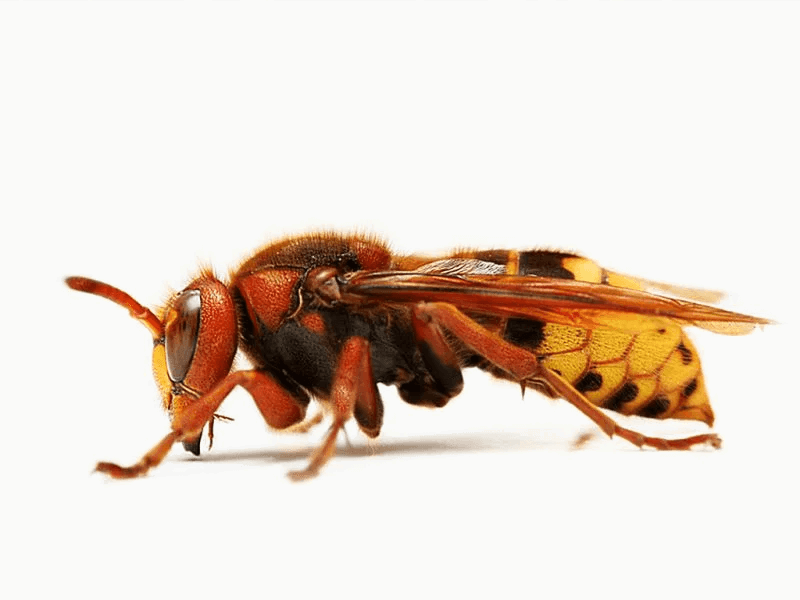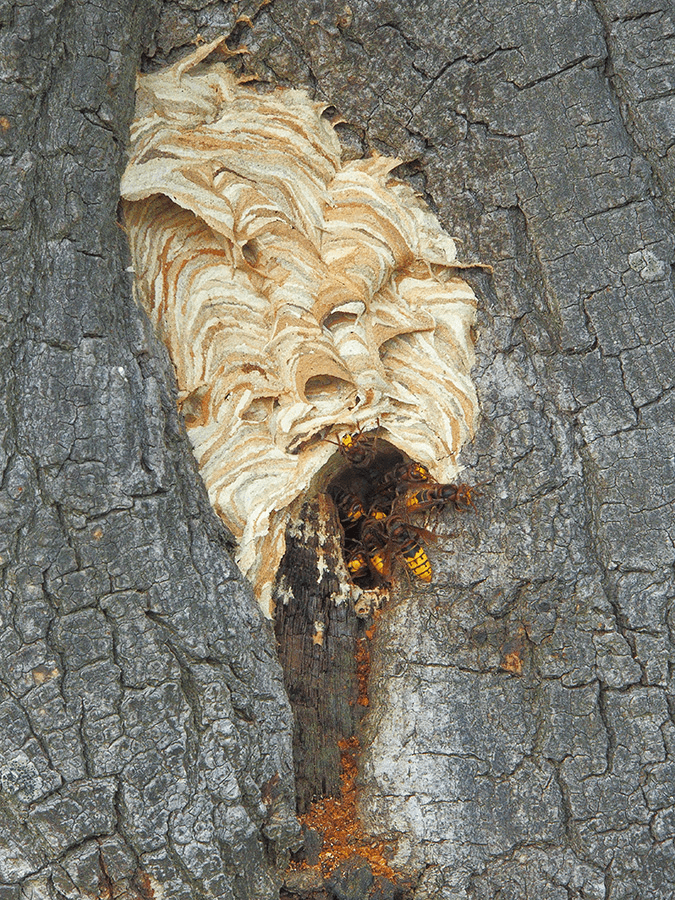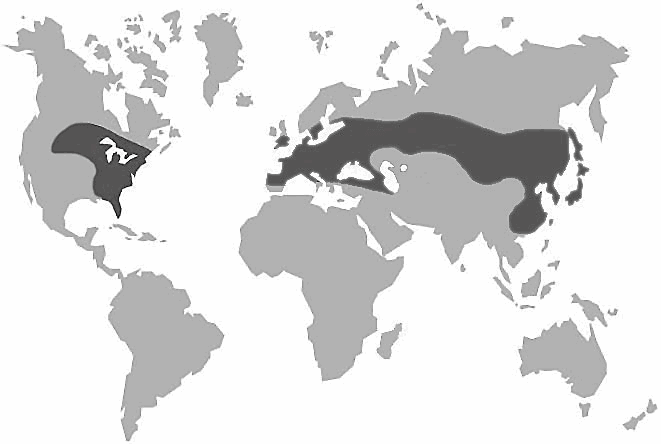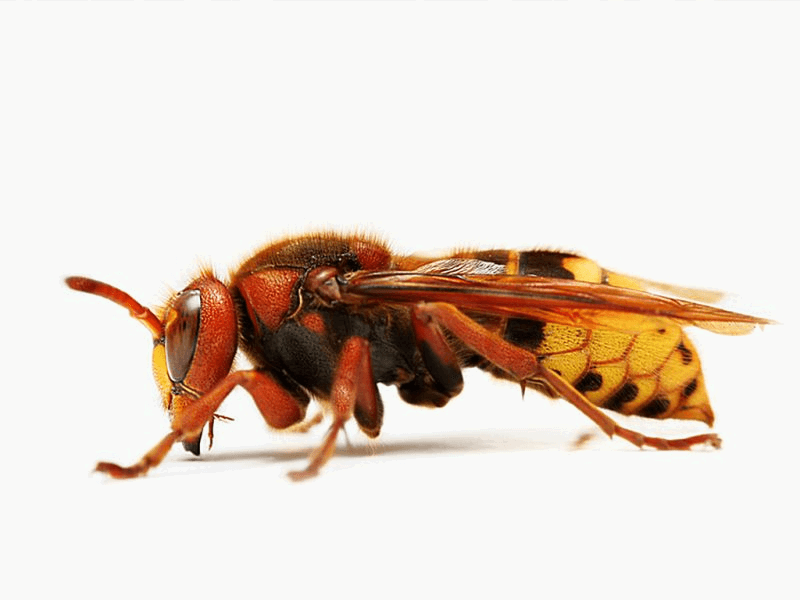European Hornet

EUROPEAN HORNET:
KPCOFGS:
Kingdom: Animalia
Phylum: Arthropoda
Class: Insecta
Order: Hymenoptera
Family: Vespidae
Genus: Vespa
Species: Vespa crabro
Type of Hornet: European Hornet or Vespa crabro.
Nº of Subespecies:
V.c. altaica
V.c. borealis
V.c. caspica
V.c. chinensis
V.c. crabroniformis
V.c. crabro
V.c. flavofasciata
V.c. germana
V.c. oberthuri
V.c. vexator
SIZE:
Workers: around 25mm or 1 inch.
Queens: can reach up to 35mm or 1.4 inches.
Males: usually smaller than females, but males' abdomen has 7 segments, whilst females' have six.
LIFE SPAN & REPRODUCTION:
Like many social wasps, European hornets (hornets are not wasps) die as winter approaches.
Workers: like many social wasps, these usually have lifespans between 12-22 days.
Males: these have slightly longer lifespans than female workers, and when winter arrives, males abandon the nest to mate with fertile females. These females will become the next queens, and the males and workers die.
Queen: the queen usually lives for 12 months, although it has to survive winter after leaving its parents' nest. Many are eaten by other insects.
QUEEN INFO:
The queens are the fertile females that mated with males from its parents' nest, that means, that they survived winter and lay eggs during spring to form a new colony.
To survive winter, they usually hibernate in houses' roofs or in wood piles/organic material piles which offers shelter from cold temperatures. Many are eaten by spiders and other insects or wake up too early and die because of lack of food.
EGG to ADULT: The eggs are laid into combs (horizontal lines of cells, and once the eggs are laid, they will take between 5-8 days to hatch.
Then the larvae will undergo 5 stages of development over the next 14 days (2 weeks).
COLONY / NEST INFO: Built in dark places.
Relatively small colonies, ranging from 200-400 workers.
European Hornets usually look for dark spots before starting a new colony, this include roofs, garden houses, hollow tree trunks, etc.
These nests are made up of paper, which the hornets make by chewing vegetable organic tissues, such as leaves and soft bark.
A simple opening in the bottom of the nest allows the hornets in and out. These openings have a shape similar to a mushroom or an umbrella.
A study in Turkey shown the composition of nests based on the solubility of fiber into hornet saliva: [x]
- 23% fiber
- 77% hornet saliva

STING & DEFENSE MECHANISMS:
The sting and venom of a European Hornet can rarely affect seriously to humans. The most common symptoms after being stung, are tingling in the area affected, but serious cases can also lead to headaches, short breath and fast and irregular heartbeats.
(The composition of an European Hornet is of the neurotransmitters dopamine and serotonin, for example, and enzymes such as phospholipase A and hyaluronidase, histamine and proteins melittin and bradykinin, which have been shown to cause tachycardia in small animals.)
Melittin is a powerful detergent that provokes haemolysis of red blood cells, which means that the erythrocytes rupture (lysis) and release its content into the surrounding blood plasma.
In terms of self defense mechanisms such as alarms, European Hornets have pheromones, which are stored inside internal venom sacs. 2-Methyl-3-butene-2-ol is the main pheromone which causes hornets to activate an "alarm behavior" which consists of a constant buzzing and darting in and out of the nest, and targeting the predator/danger.
INTERESTING FACTS:
European Hornets have been seen to steal prey from spiders, which is known as kleptoparasitism, this is most commonly seen once fall season begins, that is when food starts to be scarce. The spiders don't usually attack the hornets while this is stealing its prey.
Moreover, unlike bees and wasps, European Hornets are active during night.
LOCATION MAP:
European Hornets are never found further north than the 63rd parallel.

PHOTO:

(For more information about the websites consulted in this article, see the Bibliography at the bottom of the website.)
